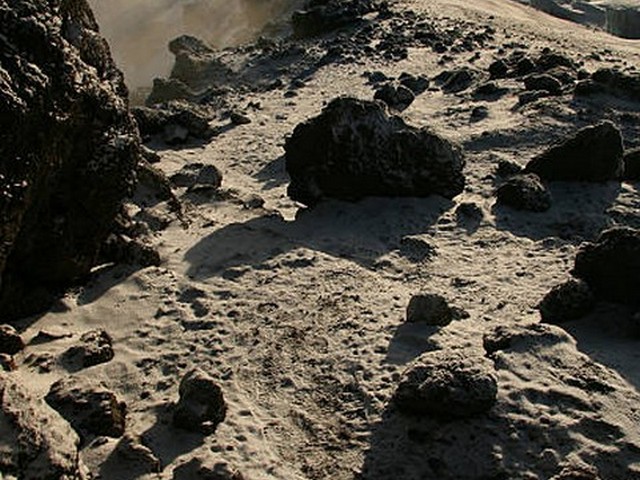Kilimanjaro Photography Tips For Capturing Mist And Clouds
Kilimanjaro! The very name conjures images of mist-shrouded peaks and clouds rolling over lush landscapes. Picturesque doesn’t even begin to describe this majestic mountain. For photography enthusiasts, capturing the ethereal beauty of Kilimanjaro’s mists and clouds is a dream come true. At Kilimanjaro Centre for Trekking and Ecotourism (KCTE), we understand the allure of these moments frozen in time. That’s why we’ve compiled this guide to help you immortalize Kilimanjaro’s mystical ambiance through your lens. Whether you’re an amateur photographer or a seasoned pro, these tips will enhance your photographic journey on this iconic mountain.
Understanding the Mystical Mists of Kilimanjaro
Kilimanjaro, Africa’s highest peak, is as famous for its stunning vistas as it is for its challenging treks. The mountain’s diverse ecosystems and the clouds that often envelop its summit create unique photographic opportunities. Capturing these moments requires understanding the interplay of light and moisture, which can transform your photos from ordinary to spectacular.
Best Times to Capture Mist and Clouds
Timing is crucial when photographing Kilimanjaro’s mists and clouds. The early mornings and late afternoons are magical hours, as the soft golden light blends with the mists to create a dreamlike quality. During these times, the sun’s angle enhances the textures and layers of the landscape, providing depth to your photos.
Equip Yourself for Success
Before you embark on your photographic expedition, make sure you have the right gear. Here are some essentials:
Cameras and Lenses
- DSLR Camera: Offers flexibility with adjustable settings that can cope with the varying lighting conditions on Kilimanjaro.
- Wide-Angle Lens: Perfect for capturing expansive landscapes and sky-filled horizons.
- Telephoto Lens: Ideal for zooming in on distant subjects like wildlife or distant peaks emerging from the mist.
Accessories
- Tripod: Essential for stability, especially in windy conditions or when using long exposures to capture the movement of clouds.
- Lens Filters: A polarizing filter can help enhance the blues of the sky against the white of the clouds, and a neutral density filter is useful for long exposure shots.
- Weather Protection: Ensure your gear is protected against moisture with waterproof bags or covers.
Techniques to Enhance Your Photography
With your equipment ready, consider these techniques to truly capture the essence of Kilimanjaro’s clouds and mist:
Play with Exposure
Experiment with different exposures to capture the varied intensities of light. Overexposure can artistically highlight the mist, creating a sublime, airy feel. Underexposure, on the other hand, can dramatize the scene and emphasize the clouds’ mysterious depths.
Focus on Composition
The rule of thirds is particularly effective in landscape photography. Place the horizon along one of the horizontal lines that divide the image into thirds, which can help create a balanced composition that draws the viewer’s eye across the picture.
Capture the Movement
Use a slower shutter speed to capture the flowing movement of the mist or the swirling of the clouds around Kilimanjaro’s peaks. This can add a dynamic element to your photographs, conveying the power and mystery of nature.
Stories in the Sky: What to Look For
While the focus is often on the mountain itself, Kilimanjaro’s skies are a canvas worth your attention. The interplay of light and clouds can tell a compelling story. Here are a few phenomena to watch for:
Lenticular Clouds
These lens-shaped clouds often form at high altitudes and are a spectacular sight. They indicate instability in the atmosphere and can add a dramatic element to your compositions.
Alpenglow
This phenomenon occurs when the sunset or sunrise light reflects off the mountain’s snowy surfaces, creating vibrant hues of pink, orange, and purple. It’s a magical moment that’s perfect for capturing the spirit of Kilimanjaro.
Preserve the Environment While You Capture It
At KCTE, we are committed to ecotourism and urge all our guests to practice responsible photography. This means respecting wildlife, keeping to designated paths, and ensuring that no damage is done to the environment during your quest for the perfect shot.
FAQs: Perfecting Your Kilimanjaro Photography
Q1: What is the best season to photograph Kilimanjaro?
The dry seasons, from late June to October and from late December to March, offer clearer skies and more predictable weather, making them ideal for photography.
Q2: How do I handle changing weather conditions?
Be prepared to adapt. Weather on Kilimanjaro can change rapidly, so having protective gear for your equipment and versatile camera settings can help you manage unexpected situations.
Q3: Any tips for battery management in cold weather?
Cold can drain your batteries quickly. Keep spare batteries close to your body warmth and switch them out as needed.
Let’s Capture Kilimanjaro Together
Embarking on a photography adventure to Mount Kilimanjaro is not just about capturing stunning images; it’s about experiencing the awe of nature and the thrill of the climb. Book your Kilimanjaro climbing expedition with Kilimanjaro Centre For Trekking and Ecotourism (KCTE), and let us guide you to the perfect spots to capture the mountain’s mystical mists and majestic clouds. With KCTE, your journey to the roof of Africa will be unforgettable, both in your memories and in your photographs. Reach out today, and let’s start planning your photographic adventure on Kilimanjaro!
Capture the clouds, embrace the mist, and engrave the majestic Kilimanjaro forever in your heart and on your camera. Join us at KCTE for an adventure of a lifetime!




